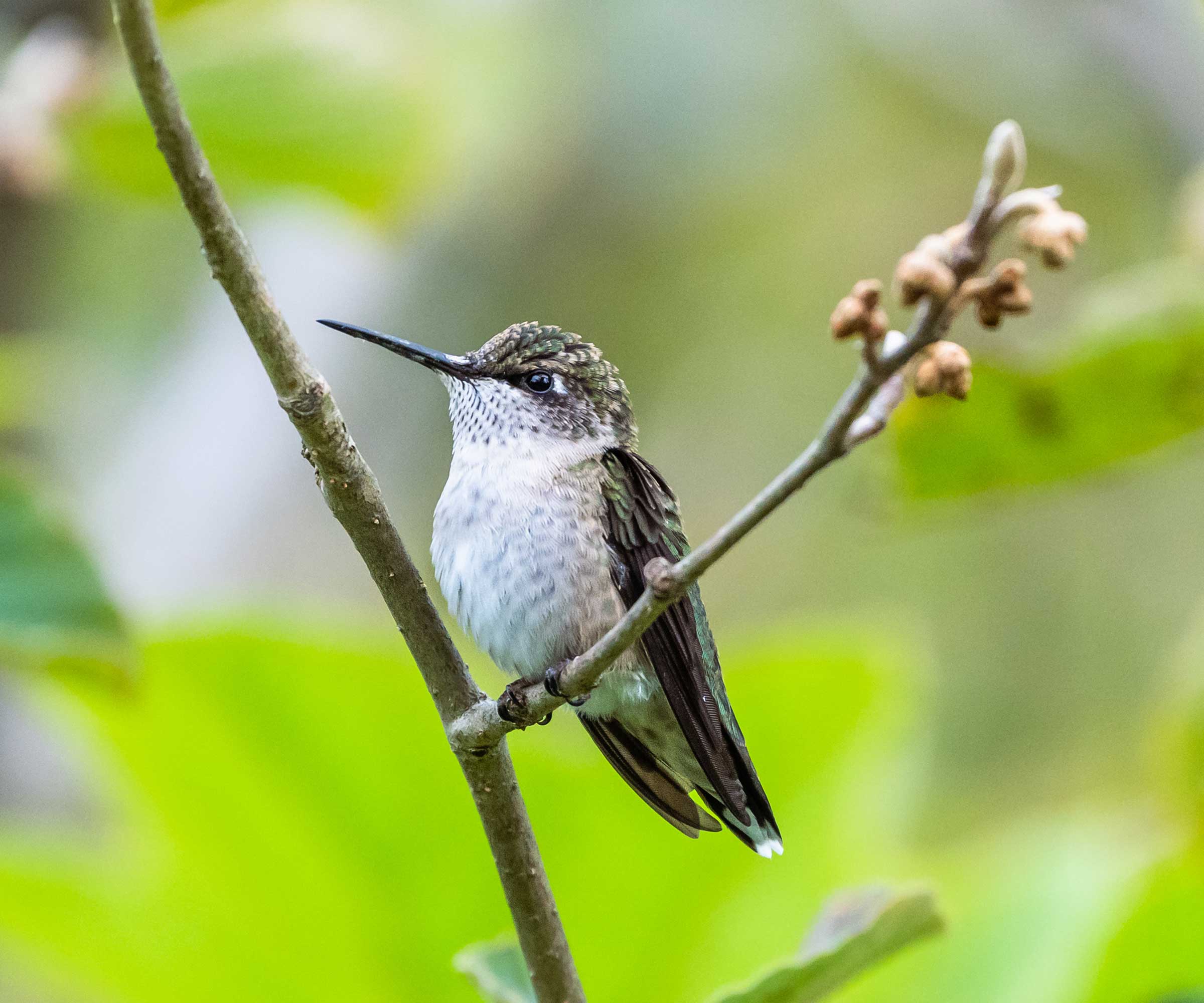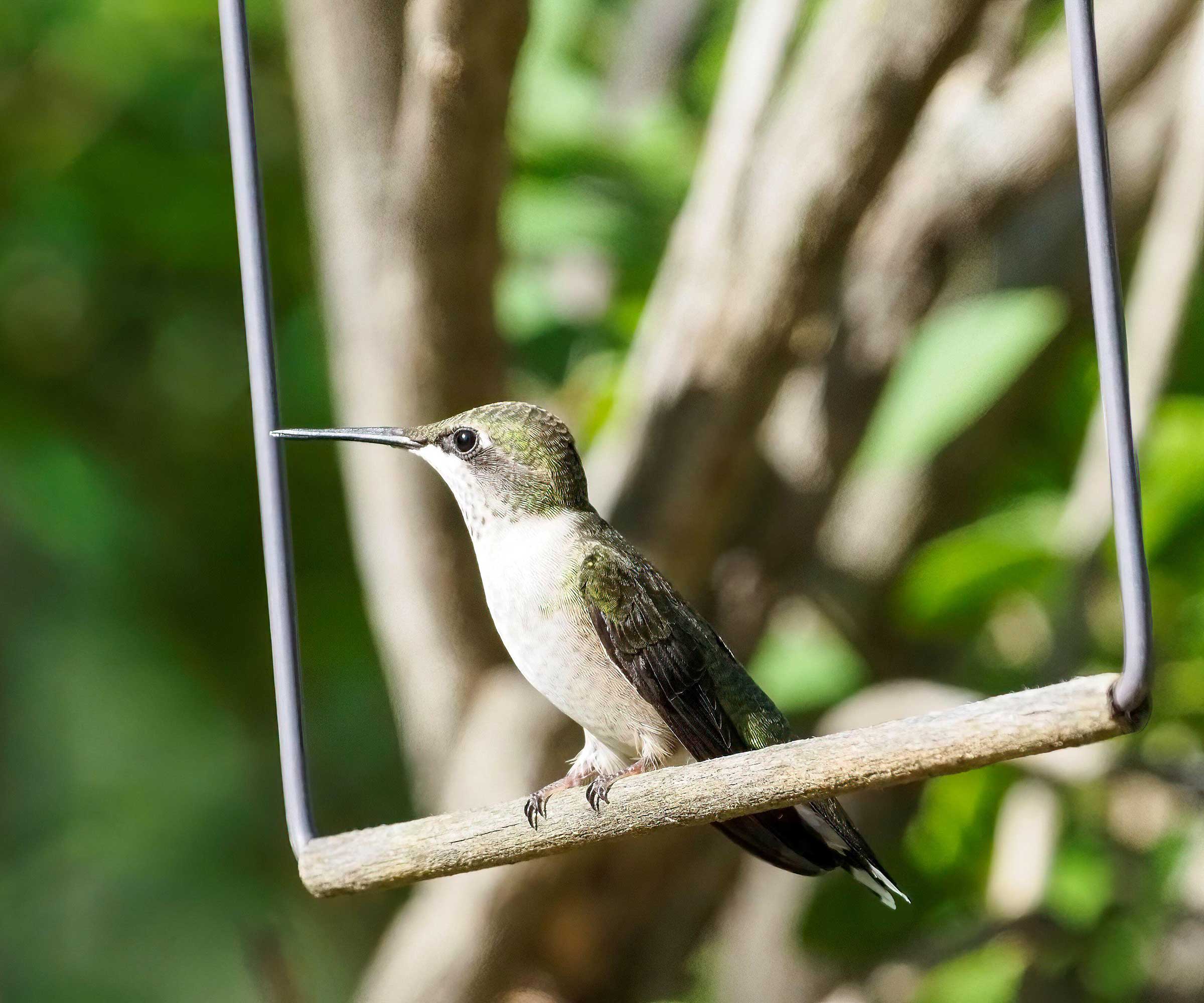Hummingbird perches – why they're important, and how you can offer them in your backyard
Give visiting hummingbirds a prime place to rest with this expert advice


Most of us love the sight of a hummingbird or two flitting around our backyard. And putting out feeders or planting nectar-rich flowers are great ways to encourage these visitors. But another important way to make a backyard as hummingbird-friendly as possible is to provide places for them to perch.
After all, these tiny creatures need somewhere to rest their wings from time to time, so providing a perch shouldn't be overlooked when trying to attract hummingbirds to your yard. There are multiple ways to do so, as the experts in this guide explain.

Hummingbirds often feed while in flight
Why do hummingbirds need perches?
If you have planted flowers that attract hummingbirds in your backyard, you've likely watched them feast on them while in flight. 'Hovering in mid-air while feeding consumes a lot of energy for hummingbirds,' says Kelsey Waddell, an expert from WildBirdScoop.com. 'Having perches nearby allows them to conserve energy by perching and resting between feeding, rather than constantly hovering. They also need to rest and digest their food, which they eat in huge amounts to fuel their high-energy activities.'
Zach Hutchinson, Owner of FlockingAround.com, agrees that perches provide a place for birds to take a temporary rest, but adds that there are other benefits, too.
For the males of most hummingbird species in North America, the perch is used as a place to watch over territory, defend food resources, court females, offer displays of grandeur, and watch for predators and other males, he says.
'During the breeding season, females perch out in the open far less than males. They prefer a more secretive approach, with perches that are hidden within layers of leaves or needles, offering camouflage and protection. Males, though, prefer a perch in the wide open space, high above their domain, where they can look and listen in all directions. They want to sit atop a throne fit for a hummingbird.'

Zach Hutchinson is the owner of FlockingAround.com and an ornithologist striving to ignite bird conservation globally. He is also the creator of the Great Wyoming Birding Trail and the author of Birding in Yellowstone National Park. Zach has banded and tagged over 15,000 wild birds and has efforted to protect birds for over a decade. However, he also crawled in the muck and grime in the world of reptiles and amphibians (and loved every moment) before his work with birds, as he worked in alligator conservation on the gulf coast to mitigate human and alligator conflicts.

Kelsey is a freelance writer and amateur backyard-bird enthusiast living in southern Virginia. From the moment she moved from the suburbs to her current rural home, she was struck by the sights and sounds of the abundant wildlife. She's been watching, learning, and trying to attract more feathered friends ever since.

Native trees and shrubs provide places for these birds to perch
How to offer hummingbirds a place to perch in your yard
'With the minuscule grappling hooks that hummingbirds have for feet, these mighty minis can grip and perch on almost any structure,' says Zach. 'They will perch on clotheslines, light fixtures, powerlines, fences, and a variety of other manmade objects. More natural perches include tree branches, bushes and snags.'
Design expertise in your inbox – from inspiring decorating ideas and beautiful celebrity homes to practical gardening advice and shopping round-ups.
To create a perching environment that's suitable for both male and female hummingbirds, he recommends planting plenty of native trees and bushes. 'The combination of these plants creates a structured space that male hummingbirds can patrol above, while female hummingbirds slink through below.'
Zach notes how these native woody plants also provide other benefits: nesting habitat and homes for insects – a crucial part of hummingbirds' diet. 'Offering hummingbirds not only a space to perch, but also a buffet and a home, is the best way to keep hummingbirds hanging around your home for years.'
If you have a compact, urban plot, a paved space, or a rental, then it may not be possible to plant trees and shrubs. But don't worry – there are other options. 'The use of a clothesline set well above arms reach will offer hummingbirds a safe perch space as well,' says Zach. 'If this is the option used, make sure to avoid using ropes with synthetic fibers, as they can become wrapped around the feet of hummingbirds causing injury. I have seen this firsthand, and I strongly urge hummingbird-lovers to heed that advice.
'If using a metal line, try to use a wire with a protective outer coating, limiting the chance for the hummingbird to be injured by any protruding metal bits.'

You can buy hummingbird swings online
'As a final thought for a perch, consider creating a natural perch through some crafted means,' he adds. 'Perhaps erect a post or pole and then securely mount some large tree branches to the pole. This will offer the hummingbird a more natural perch but does not require a significant yard remodel.'
There are also hummingbird perches available to buy online, such as these decorative Winemana Hummingbird Swings from Amazon, which can be hung from a tree branch or somewhere else up high. Alternatively, Kelsey suggests creating dedicated perch stations in your yard by installing small poles or rods at strategic locations. 'These can be made from materials like wooden dowels or metal rods of around 1/4 to 1/2 inch in diameter.
'Place them near hummingbird feeders or flower gardens, and at different heights to provide variety for the birds,' she adds.
Putting out perches is a great way to make your backyard more wildlife-friendly. And to increase your chances of spotting these feathered friends even further – while keeping them healthy and happy – remember to keep their feeders clean, and avoid these common hummingbird feeder mistakes. If you want to take photos of these miniature native birds, see our guide on hummingbird feeder cameras, for impressive close-up shots.

Holly started writing about gardening five years ago, and she is a regular contributor to Homes & Gardens. She has also written many gardening features for Woman & Home and Real Homes, too. She has previous experience as a professional gardener, where she helped to plant and maintain private gardens. Holly has also looked after allotment plots over the years and loves to grow her own flowers and veggies from seed. In her spare time, she enjoys visiting local gardens, botanical drawing, and tending to her ever-growing collection of houseplants.